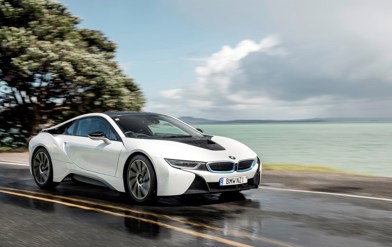The world of premium cars is all about pure-electric power these days. It’s all so new.
Except it isn’t really. It’s easy to forget that Jaguar launched the I-Pace way back in 2018, at a time when its only real rival was Tesla. And the company didn’t exactly play it safe: it spent up large to take full advantage of the powertrain and packaging advantages of battery electric vehicle (BEV) technology by creating a bespoke platform, sharing very little with its other SUV and sedan models.

Money well spent of course, now we know Jaguar is going completely electric from 2025. Isn’t everybody?
At the time we were fascinated and occasionally confused by what the I-Pace was: SUV, sedan, four-door coupe? Again, Jaguar got it right because we now know the flexibility of BEV architecture means we don’t actually need to compartmentalise plug-in cars so much. A single model can be any of those things, or all of them at once; think Kia EV6 (which owes a lot to the Jaguar) or Polestar 2.
The I-Pace is still with us, with a few tweaks, and it’s still very competitive with the likes of the Audi e-tron, BMW iX and Mercedes-Benz EQC. The 90kWh battery and 470km range are bang on target for the segment, as is the quick-to-react dual-motor AWD system.
To view all Jaguar I-Pace models listed on DRIVEN, click here
Over-the-air updates (there’s a SIM card in the car, so it’s “live”) mean every I-Pace has benefited from software changes along the way; for example, in 2019 the maker applied an upgrade it says grew out of its Formula E race data, adding an extra 20km of range to the I-Pace. It’s another example of how we all have to learn to think differently about what the “latest” model of car is, in the BEV age.

But it’s also clear that maximum care was taken with the fundamentals of the engineering package right from the start. As is often the way with BEVs, you can adjust the steering, braking feel/regeneration and air suspension with one touch, but whatever mode you’re in, the I-Pace has a remarkably sophisticated gait.
It’s easy to give a BEV explosive acceleration off the line, and I-Pace can certainly do that: in Dynamic mode it will slap you in the back from a standing start, although it makes no claims about being supercar-fast: 0-100km/h is a rapid-but-not-outrageous (for an EV) 4.8 seconds.
What’s really impressive is the linearity of the steering, the communicative nature of the chassis and the fantastic ride. Too many BEVs - even expensive ones – fall victim to numb steering and brittle suspension. This one is just as slick and pleasing as a traditional Jaguar sedan and never feels cumbersome in corners, despite weighing 2.1 tonnes.

The cabin is a packaging marvel thanks to a mostly flat floor (there’s a tiny faux-transmission tunnel down the spine for some reason, though) and massive 2990mm wheelbase. But it doesn’t feel as futuristic as you might expect, despite digital screens everywhere.
The main instrument panel is quite conventional and the infotainment system is a simple centre-console screen; although Jaguar has just upgraded the I-Pace from the decidedly average original OS to the new Pivi Pro setup, as per the F-Pace. It’s slick, quick and comes with wireless phone projection.
The I-Pace also has a few Range Rover-esque pieces of tech, such as the separate touch-screen climate control menu and flush-fit door handles it first introduced on the Velar.

Spacious though the cabin may be, it’s a slightly strange experience having high ground clearance in combination with the I-Pace’s coupe-like styling. It means you’re elevated in the driver’s seat, but still sometimes have trouble judging where the corners of the car are (you can’t see them) when parking.
Jaguar has also been quite clever with I-Pace specification. Look at our test vehicle, in a dark colour with quite a conventional alloy wheel design (still 20-inch rims though), and it can seem quite Jaguar-traditional. Which probably appeals to many of its long-standing customers coming out of sedans like the XE and XF; it’s certainly a common look out there.
But in a light/bright hue, with dark detailing (our car had the Black Exterior pack, not that you can tell) and the right technical-looking wheels, the I-Pace can look downright futuristic. Like it was launched yesterday; or tomorrow.

JAGUAR I-PACE EV400 SE
ENGINE: 90kWh lithium-ion battery, dual electric motors
POWER: 294kW/696Nm
GEARBOX: Single-speed automatic, AWD
0-100KM/H: 4.8 seconds
CONSUMPTION: 19.1kWh/100km, range 470km (WLTP)
PRICE: $159,900















